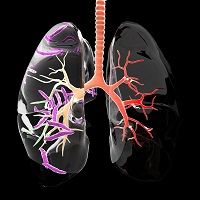Article
Higher Dose of Drug May Reduce Treatment Time for Patients with Tuberculosis
Author(s):
A high dose of rifampin and moxifloxacin in combination with standard drug treatment could cut the length of time needed to successfully treat patients for tuberculosis.

A high dose of rifampin and moxifloxacin in combination with standard drug treatment could cut the length of time needed to successfully treat patients for tuberculosis, according to study results released this week at the annual Conference on Retroviruses and Opportunistic Infections in Seattle.
The study was presented by Martin Boree, MD, of Radboud University Nijmegen Medical Center in the Netherlands on behalf of the PanACEA Consortium.
The study results showed some patients had reduced time to culture conversion in liquid media, a standard test that is a positive sign that a patient treated for tuberculosis (TB) is cured or getting better. Reduced time to achieve this marker could mean shorter treatment regimens, which is urgently needed, according to the study abstract.
Patients with drug-sensitive smear-positive TB were randomly assigned to one of five arms to receive various combinations of drugs for 12 weeks. All patients then were given astandard dose of antibiotics rifampin and isoniazid to complete a total of 26 weeks of treatment and were followed up with to document failure and relapse.
The open-label, multi-arm-multi-stage study was designed with one interim analysis that allowed for recruitment to arms to be stopped if treatment was found to lack patient benefit. The primary endpoint was time to stable culture conversion to negative in liquid media up to 12 weeks.
The first group of patients received SQ109 along with a standard dose of rifampin, isoniazid, and pyrazinamide. The second group received SQ109 and 20 mg/kg of rifampin together with pyrazinamide and isoniazid. The third group received moxifloxacin 20mg/kg of rifampin together with pyrazinamide and isoniazid. The fourth group received 35 mg/kg of rifampin together with ethambutol, pyrazinamide, and isoniazid.
The control arm received rifampin, isoniazid, pyrazinamide, and ethambutol for 8 weeks.
Out of 365 patients randomized to seven sites in Tanzania and South Africa, 25 (7%) were HIV positive. Recruitment to both SQ109 arms was stopped after the interim analysis and those patients remained on treatment and received follow up once it was completed.
Results of the study showed that the greatest reduction in time to culture conversion was seen among patients who received the high-dose rifampin, according to the study abstract. For this group the covariate-adjusted hazard ratiowas 1.75 (95% confidence interval 1.21 to 2.55) compared to control over 12 weeks.When comparedto control at 8 weeks in order to mimic previous TB trials, the covariate adjusted HR was 1.99 (95% CI 1.21 to 3.29).
“This is the largest reduction in time to culture conversion seen in any previous TB trial to our knowledge,” states the abstract.
Based on data from the study, the authors conclude that 35 mg/kg rifampin may reduce the time to culture conversion and may be an important component of future treatment-shortening regimens.
The treatments in all arms of the study appeared to be safe and well tolerated, according to Boree. There was a modest reduction in time to culture conversion for the group of patients who received 20 mg/kg rifampin and moxifloxacin and no reduction for theSQ109 groups. Grade 3 or higher adverse events were experienced by seven or more patients in all treatment arms. Ten patients had hepatic adverse events that lead to a change in treatment.




